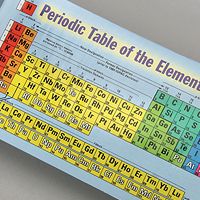My Cart
Your Shopping Cart is currently empty. Use Quick Order or Search to quickly add items to your order!
By Shuana Jordan
Product Developer

Too often, students remember for a short time certain trends and properties associated with groups and periods of elements, yet come away from a study of the periodic table without really understanding or appreciating how much information the table provides.
In the following activities, students discover for themselves several trends associated with the elements on the periodic table. In Activity 1, students create an organized table from the elements’ electron configurations. Then in Activity 2, they create 3 graphs showing the relationship between elements’ atomic number, atomic radius, electronegativity, and number of valence electrons. The activities are appropriate for a class of high school students working in pairs.
These instructions are written for use with pencil and paper but could be easily modified according to the technological resources at your disposal.
Grades 9–12
Physical Science
| Element Name | Element Symbol | Electron Configuration |
| Calcium | Ca | 1s22s22p63s23p64s2 |
| Nitrogen | N | 1s22s22p3 |
| Sulfur | S | 1s22s22p63s23p4 |
Figure 1 Element List 1 (sample).